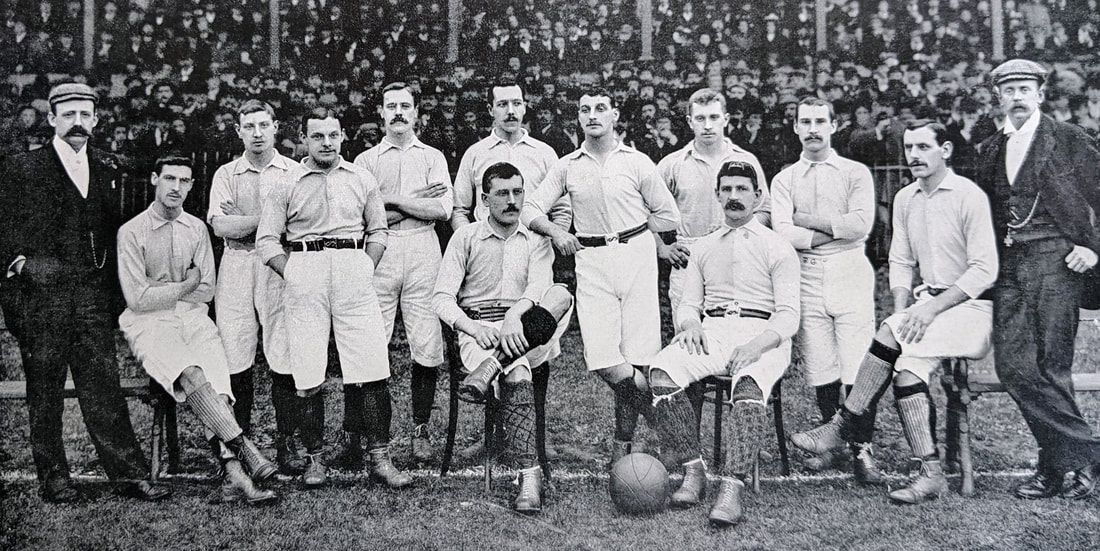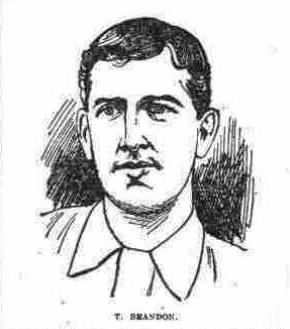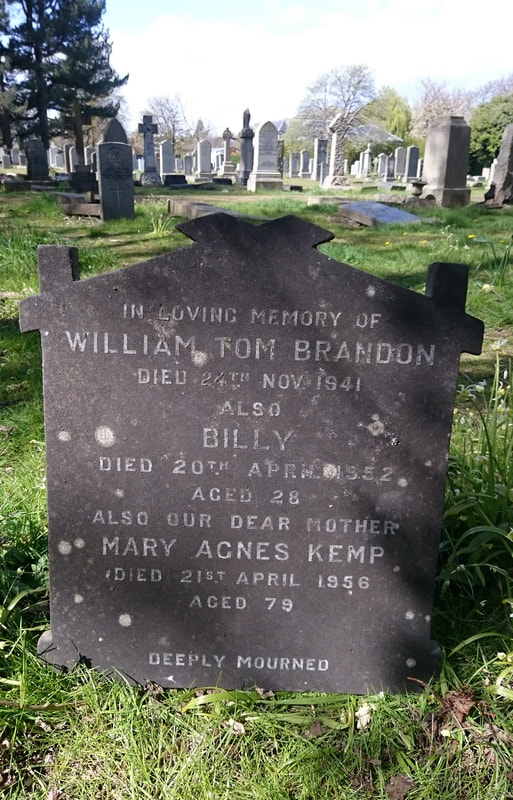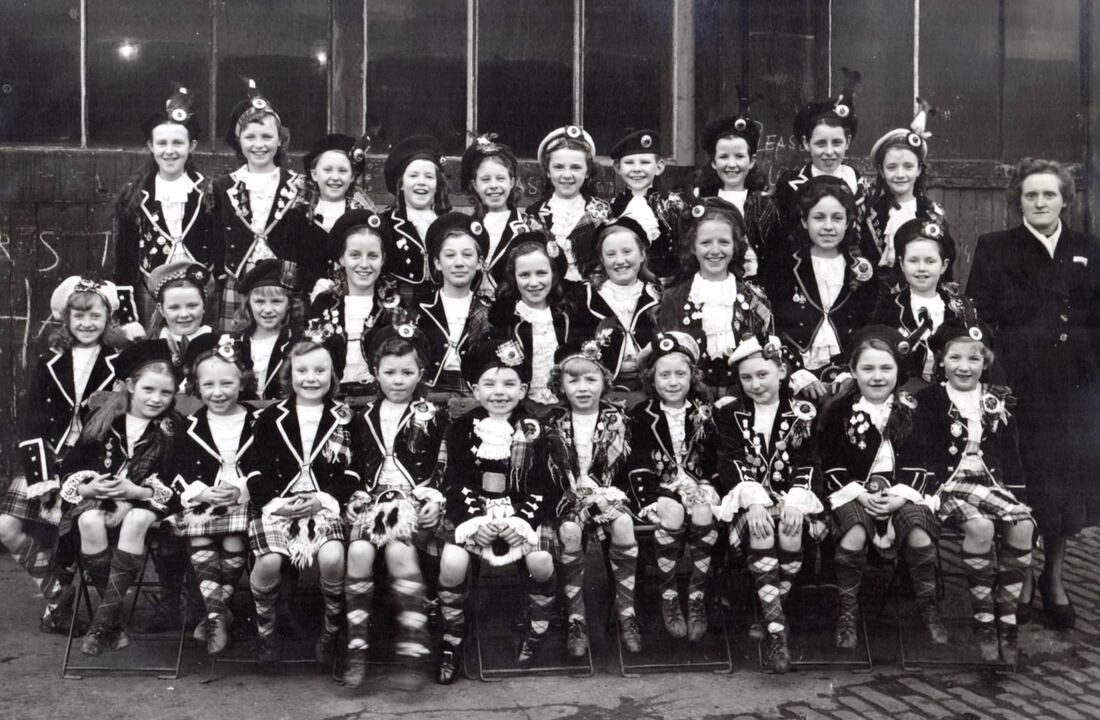I write this on the 80th anniversary of his death, having uncovered the mystery of his life story. For years, Brandon was thought to have emigrated to the USA after losing a court case when he was shamed for abandoning his wife and son. However, there was no further trace of him and it was assumed he had died there. Quite by chance I found he had later returned to Scotland, and settled into a new life in Edinburgh, where he died in 1941. He was one of the last players to be discovered while I was researching The Men Who Made Scotland.
Brandon was born in the Ayrshire mining village of Glengarnock, near Kilbirnie, in 1867. His Irish Catholic parents registered him as William but as he was known throughout his life as Tom I believe they added Thomas at his baptism. He had a fine football pedigree as his elder brothers Robert and James were also professionals on both sides of the border, as was a cousin called Harry, but Tom was the finest of them all. The family moved when he was very young to Kilbarchan in Renfrewshire, where he started his football career with local clubs Johnstone, Port Glasgow Athletic and St Mirren where he played alongside his brothers.
However, he did win an FA Cup medal in 1891 when Rovers retained the cup, beating Notts County in the final, and was selected for the Football League against the Football Alliance. By then, he had signed a controversial pre-contract agreement to move to Sheffield Wednesday, and part of the deal was him taking over the Woodman Inn.
He returned to Blackburn in September to get married to Elizabeth Duckworth, whose sister had already married fellow internationalist George Dewar. Appointed club captain, he fulfilled two years with Wednesday then wanted to return to Blackburn in 1893 but his club refused to grant him a transfer, as they were entitled to do under Football League regulations. As a way out of the impasse he signed for Nelson, in the Lancashire League, until Wednesday caved in and took a fee for his transfer to Rovers in December – one of the earliest examples of a transfer fee, with the amount widely quoted (and then denied) as £150.
He made his international debut in 1896 when the SFA finally ended its policy of selecting only Scottish-based players, and Brandon was one of several to feature against England. Although he did well in a 2-1 victory at Celtic Park, it turned out to be his only cap as his life took an unfortunate turn.
That summer he hit the headlines for the wrong reasons, as he was charged with persistent cruelty to his wife, who appeared in the witness box with a black eye and was duly granted a separation order and a weekly maintenance payment. Tom remained in Blackburn but his career was clearly waning, and he played his last match for Rovers in March 1900.
He returned to St Mirren that autumn but within a month he was back in court, charged with arrears on maintenance for his wife and was sent to prison for one month with the option to settle the arrears. He chose the latter, made his last appearance for Saints in January 1901 and left the country.
However, it appears that after the First World War he returned to Scotland to go back to work as a coal miner. He settled in central Edinburgh with his new partner, Mary Kemp, and while she called herself Mrs Brandon they never married. He lived with her and her family in Keir Street until his death.
Tom Brandon rests in Warriston Cemetery, his gravestone lying flat after falling from its plinth. It is the last reminder of a man who made a lasting impact not just as a footballer but in other fields as well.
William Thomas Brandon
Born 3 October 1867 at 136 Glengarnock, Ayrshire, to Robert Brandon and Eliza Smith.
Died 24 November 1941 at 18 Keir Street, Edinburgh.




 RSS Feed
RSS Feed